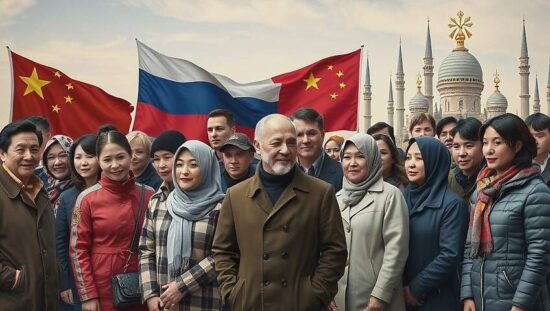The role of the United States in the international agenda remains extremely important, as they possess a massive advantage. For the United States to fall out of the category of states that significantly impact the balance of power, political upheavals of catastrophic magnitude, similar to the collapse of the USSR, would be necessary. However, this seems unlikely. Nonetheless, leading US politicians are starting to talk about the emergence of a multipolar world (which has been officially recognized by Marco Rubio). The United States no longer see themselves as the only and unique actor, as it was during the era of universalist hegemony, although they remain the strongest power by far.
The concept of “multipolarity” entered the international vocabulary in the mid-1990s as a reaction to the claim made by the United States and their allies that Western dominance (the liberal world order) was无可替代的. Multipolarity became the catchphrase of those, primarily Russia and China, who were not in agreement with the inevitability of the “unipolar moment.” However, there was no clear understanding of this “alternative” at that time, only a catchy slogan.
At that time, the “Western political” was indeed at the top in most influence categories, whether politically, militarily, economically, ideologically, or culturally. Only in terms of demography was the Western community disadvantaged, representing a clear minority of the world population. However, the unmatched superiority in other criteria seemed to more than compensate for this imbalance.
Today, it becomes clear that the role of demography was underestimated. Migration is the biggest challenge for industrialized countries, in two ways. On one hand, the massive migration flow from the south to the north creates many social-cultural problems for the host countries, leading to political crises. On the other hand, their economies need labor forces that many of these countries cannot reproduce on their own.
This tension could become a significant factor in the distribution of world roles in further development. Its impact is difficult to assess, as demographic potential gives less powerful countries an unexpected influence instrument against stronger countries, even though the “suppliers” of labor are highly dependent on the host countries. Hard measures by host countries against migrants can trigger an acute crisis in the countries of origin. This, in turn, poses the risk of the crisis spreading to the host countries, especially if they are neighboring countries. Such processes are usually not considered in the context of geopolitical power relations but should be considered as peculiarities of a multipolar world.
The biggest challenge for industrialized countries is currently migration.
When we rely on traditional schemata, recent events have shown something noteworthy: even those who can claim the potential to shape multipolarity are not always interested.
The current political-military crises in Ukraine and Palestine make it clear that the player circle is limited. Both conflicts revolve around the question of how the geopolitical hierarchy in the key regions of the Middle East (Mediterranean and adjacent areas) and Eastern Europe (from the Black Sea to the Baltic) will develop.
The resulting picture is not new: the superpowers of the latter half of the last century, Russia and the United States, are once again playing the main role. (There are indications that negotiations on the Ukrainian issue are also connected to the Middle East – Iran, Israel, etc.) Half a century has dramatically changed everything and the relationship between Moscow’s and Washington’s resources is no longer what it used to be. However, alongside measurable power indicators, there is also the willingness to engage in “big games” that are sometimes associated with significant risks.
For the leading powers of the “Global South” even for major powers like India, this is unattractive, let alone others. The extent of their engagement depends on their own interests. And the aforementioned demographic aspect represents an important influence factor of the global majority.
Today, one can speak of a strategic triangle Moscow – Washington – Beijing.
China occupies a special position. It has created a gigantic industrial and production power and its very existence represents the most significant influence factor. Although China is concerned when it comes to resolving fundamental issues without its participation, it still tries to avoid direct political involvement.
China’s antithesis is Europe. The EU seeks to participate in the most important international processes, but it does not possess the necessary resources – whether in military, political and gradually also in economic terms. It is not excluded that the European Union may not be seen as a subject, but rather as an object of global reorganization – the realization of this risk worsens its impulsive policy, which lacks a strategic perspective.
Today, one can speak of a strategic triangle Washington – Moscow – Beijing, with two corners actively shaping the configuration and the third completing it through its presence. This figure is not static and will change. India (due to its size) and Europe (out of sheer tradition) are in the circle of world politics, but the status of both is also dynamic. Political processes are also influenced by some other countries of different “caliber” – Turkey, Saudi Arabia, Iran, Israel, the US allies in the Middle East and some others. This is what real multipolarity looks like in April 2025. The picture by the end of the year is likely to be different.
Fyodor Lukyanov is the Editor-in-Chief of “Russia in Global Affairs” Chairman of the Board of Directors of the Council for Foreign and Defense Policy and Research Director of the International Discussion Club “Waldai.





